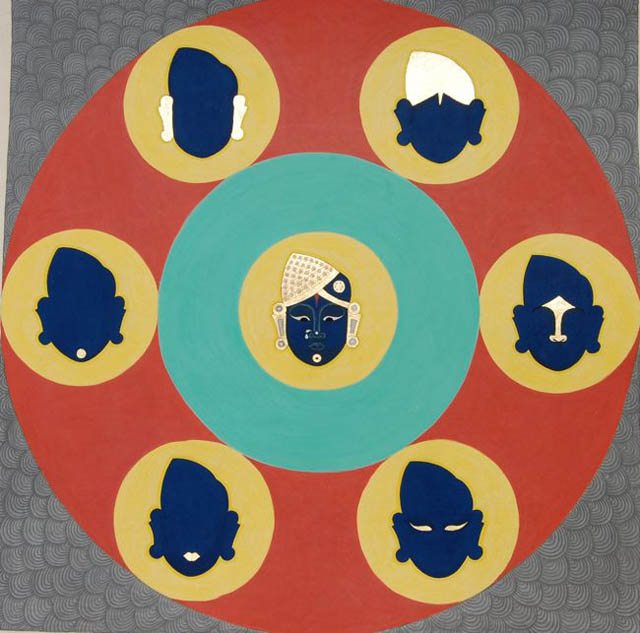
Olivia Fraser – In Search of Krishna
Life and art have a way of coming full circle. Hundreds of years ago, William and James Baillie Fraser came to India in the waning days of the Mughal Empire. The Mughal royals had been the chief patrons of the many local artists but gradually the British were taking on that role. The Frasers commissioned several noted Indian artists, including Ghulam Ali Khan, to paint several architectural renderings and portraits, including the famous Fraser Album.
Jump forward a few centuries, and Olivia Fraser, the artist and wife of the author William Dalrymple, discovered the Fraser papers in the family library in Scotland. A distant kin of James Fraser, for her these stories were the hook which set the couple on the India trail. As Dalrymple told me in New York: “Olivia is the same family as Fraser so we have this strong personal connection – he seems to be a figure I can’t seem to shake off. I’ve married into the family!”
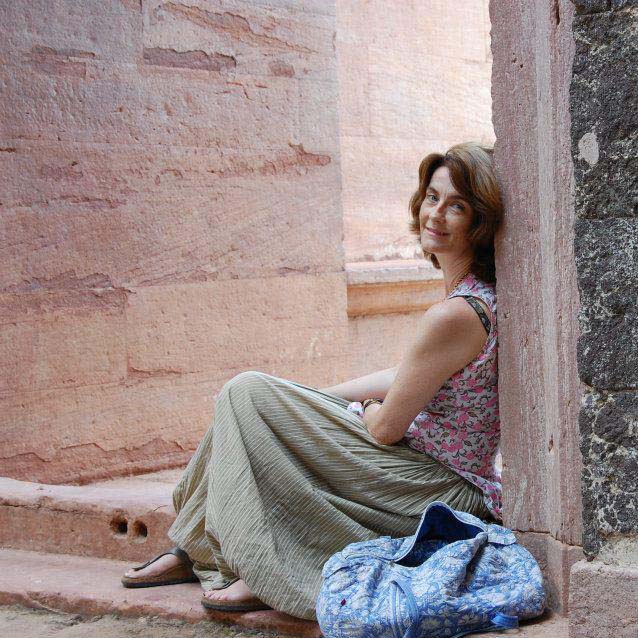
I first met Olivia Fraser in New York at the exhibition, ‘Princes and Painters of Mughal Delhi’ which was co-curated by William Dalrymple and Yuthika Sharma at The Asia Society – showcasing art of the masters from the Mughal period. Featured prominently here was also the Company School art, commissioned by the British colonials; The Fraser Album is a superb masterpiece and occupies pride of place within this collection. Ask Dalrymple which is his favorite work and he says, “The Fraser Villages – every face tells a story. I am of course totally prejudiced!”
Indeed the Fraser Album influenced Olivia Fraser tremendously and in 1989 she came to India with William Dalrymple, retracing her kinsman’s footsteps and doing it one better.
At first, her work was very much inspired by what James Fraser had commissioned – portraits of the Indian people and architectural impressions – but slowly as she got her footing in India, she has embarked on her own special journey into emotions and spirituality, into the very heart of Rajasthani miniature painting.
“Fraser’s work references the neo-tantric tradition that found expression in the work of G.R. Santosh but isn’t limited by it,” wrote Roselyn D’Mello in Art Info. “She uses bold, luxurious colors to delineate space and her experience with illustration possibly accounts for her playful depiction of Krishna in “Becoming Krishna” and “I See Him Now.” Her renderings are minimalist, so that every depiction assumes a symbolic dimension.”
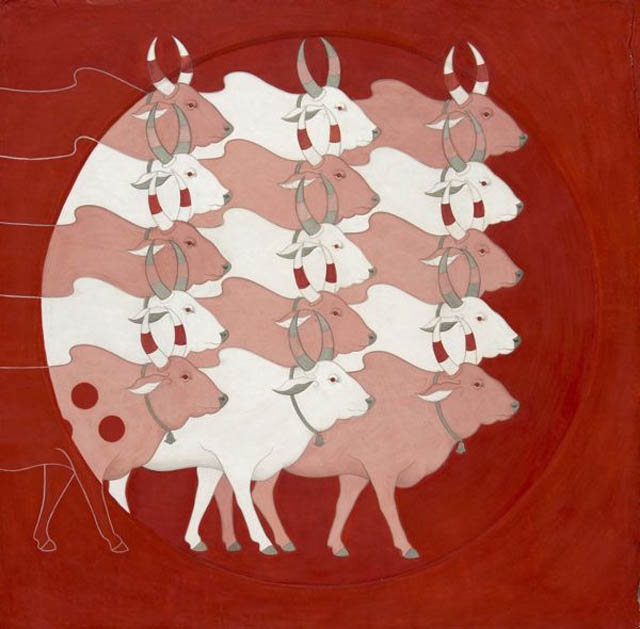
Olivia Fraser embarked on her art journey after an MA in Modern Languages from Oxford and studying art at Wimbledon Art College. Initially, her work produced in India followed a program of Western watercolor painting and architectural renderings. It is, however, Rajasthani miniature painting which has totally seduced Fraser. After years of apprenticeship to Ustad Ajay Sharma in Jaipur and Desmond Lazaro in Delhi, she herself is an expert who teaches the techniques every January, using locally sourced pigments and making her own wasli paper.
She recalls of her apprenticeship: “I would spend hours listening to him as he managed his studio, a microcosm of the world outside, channeling it into his work, relating how he used a certain sap from a particular tree outside his front door, or chalk from the cliffs around Jaipur, local flower petals or soot from an oil lamp.”
Olivia Fraser has illustrated William Dalrymple’s books, including ‘City of Djinns’. She has written and illustrated a children’s book for an Indian NGO that promotes childhood literacy: “Made in India.” She has several solo and group shows to her credit in India and the UK. Watercolors and paintbrush have come full circle as she now seeks to bring her own interpretations to Nathdwara pichwai painting.
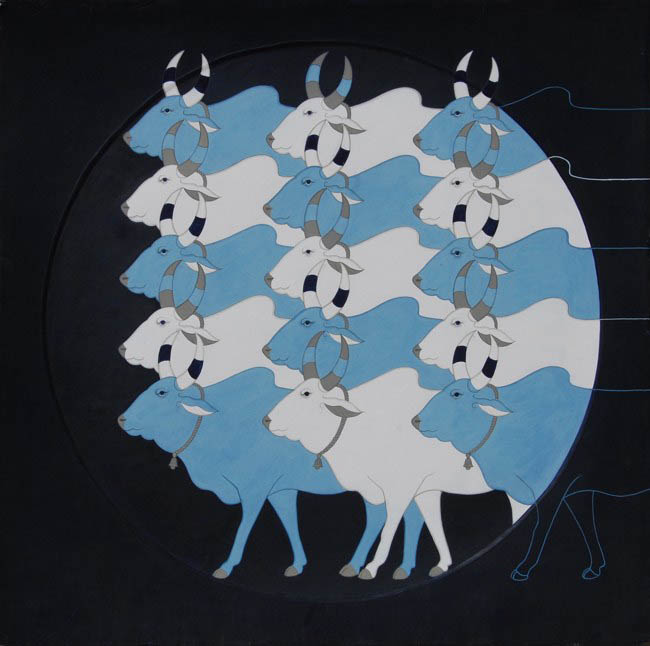
Six Questions for Olivia Fraser
1. Do you feel kind of a deja vu when you paint in India, remembering the artworks commissioned by your ancestors?
James Baillie Fraser was my distant kinsman but the paintings and aquatints he made of India in the early 19th century and particularly the miniatures of people that he commissioned from local Indian artists very much inspired my initial attempts to make sense of and capture my surroundings when I first moved out to India in the late 80’s. In fact I came out to India clutching a newly published book about him given to me by my husband, which included wonderful illustrations of James’ paintings and the Company School miniatures he commissioned.
This acted as my initial guide and teacher. James had created a series of aquatints of Calcutta and talked about tackling the monuments in Delhi. I decided to follow on from where he had left off – at first painting architectural elevations of the extraordinary monuments littered around Delhi.
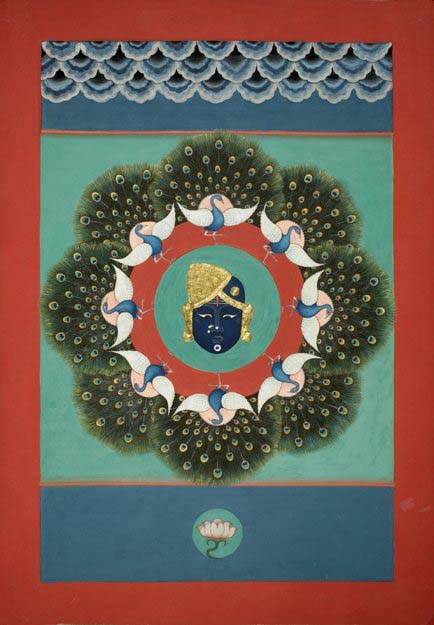
2. Tell us how you got inspired by miniature painting of the Jaipur atelier. What were the fascinations of this style – and the difficulties?
I fell in love with Indian miniature painting when I first visited The National Museum in Delhi and saw the fabulous collection of miniatures there. I was thrilled by the gem-like colors, the intricate patterning, the minute detailing, the exquisite brushwork, the extraordinary burnished flat surfaces. Maybe I had a genetic pre-disposition towards them too as I later discovered one of my great-aunts had been a miniature painter and another great-aunt (Surrealist painter Eileen Agar) had explored collage with all its integral abstract and representational pattern-making.
At first, with James Baillie Fraser’s Company School miniatures very much in my thoughts, I attempted to create my own modern miniatures using watercolor, depicting scenes from everyday life- chai stalls, taxi stands and dhobi wallahs. However when my family and I returned to India in 2004, after a period based in the UK, I decided I wanted to learn how to do the real thing. I wanted more intense colors. I wanted to learn the rigor of the Indian miniature genre, its vocabulary, its techniques.
So I dived headlong in and learned how to make wasli (the hand-made paper), grind and mix stone pigments, wield squirrel brushes, apply gold leaf work and burnish …..it was a revelation. I was captivated by the rigor, confidence and exuberance integral to the style and I loved the sacred underpinning of the Nathdwara pichwai painting. In contrast to the collapse of basic artistic discipline in the teaching of art in the West I loved the possibility of excellence that this tradition aspired to.
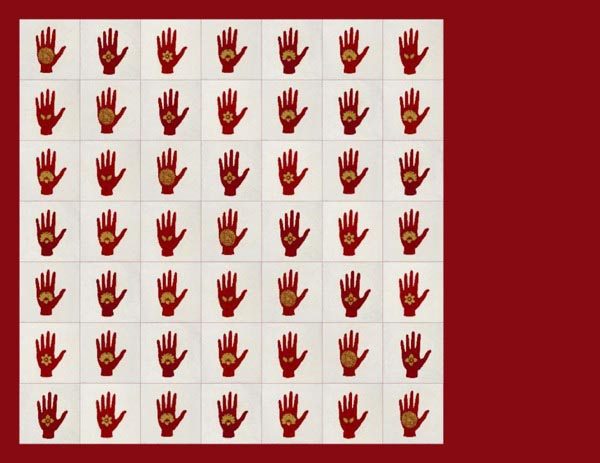
3. You now teach a miniature painting workshop in Jaipur. Who are your students and how much interest is there in learning art of the past?
Every January I co-teach, with Ajay Sharma, a miniature painting workshop in Jaipur. It is part of a whole series of art, craft and heritage-related workshops that were instigated in conjunction with the Jaipur Virasat Foundation several years ago to help conserve Rajasthan’s cultural heritage (www.wonderfulworkshops.org). It only lasts a week but it acts as a taster for people who might then wish to delve deeper. It is a residential course and we seem to attract people from all over the world.
I think miniature painting is in danger of dying out if people here don’t change their attitude towards it.
What I find remarkable is that miniature painting is so intrinsic to Indian art history but it seems as though Indian artists and Indian art schools have decided to be just colonized by the West and Western art traditions instead. All the most important Western-born twentieth century art movements: cubism, abstractionism, modernism, post-modernism etc have been successfully encouraged and developed here but miniature painting has been relegated to the dusty shelf of ‘craft’ – something that is stuck in the aspic of tradition and has no developmental, political or aesthetic possibility of change.
This is not the case in Pakistan where the National College of Arts in Lahore has fostered a whole new attitude towards the tradition and has cultivated a modern miniature movement across the border.
4. What were your first thoughts when you came to India and how do you feel about it now?
I was bowled over and still am!
5. What is a typical day for you and William? Is there any routine to his writing and your art or do you live frenetically between cities?’
Like anyone else with a job, we get up and work.
6. Describe home – and where it is – India or in the UK?
Home is where my family is and currently we have a child at school still in Delhi, plus two children at boarding school in the UK- so, for us, ‘home’ is in both countries.
Related Articles:
Princes-Painters in Mughal Delhi

5 Comments
can u pls tell me Olivia Fraser email id…
I am an artist frm rajasthan .. i do miniature paintings…with some contemprory amalgamation… pls ….
Hi Pia,
Thanks for your comments. I agree with Olivia that the art of painting miniatures have been put on the back burner in India while you see some really exciting work with coming out of Pakistan.
This was a fascinating article. It is also humbling to think that a foreigner would come to India and live and work with so much humility, while we Indians often lose the sense of wonder about the riches of our civilization. Many of us indulge in moronic pursuits and imitate what others have done instead of creating something on our own.
Via Facebook Lassi with Lavina page
Priya Singh says: The illustrations in The City of Djinns were magnificent.
I first chanced upon Olivia’s work when she illustrated City of Djinns…while I have regularly kept up with William Dalrymple’s work, I lost track of hers so it was wonderful to see her explorations of the miniature art form of which I am a huge admirer. Thanks for the interesting interview!